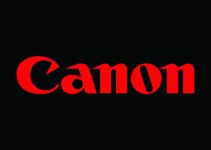Even though we’ve covered different workflows on matching two (or more) shots while colour grading multiple times, this particular topic still generates a lot of buzz among independent filmmakers and enthusiasts alike. Of course, there are various approaches regarding the process and it’s hard to give a straightforward answer or a simple recommendation.
Moreover, even the most experienced colorists could hardly provide you with strict guidelines that can yield optimal results every time. That’s why examining real-life examples along with particular workflows are always a great place to start. Again, kudos to Casey Faris, who has put together another informative video tutorial that covers his personal method for matching shots in DaVinci Resolve captured on different cameras, with different lighting, etc.
As Casey notes, matching shots is one of the primary and mandatory skills you should have under your belt, especially if you want to be a full-time colorist. In this particular case, Faris has three different clips to deal with shot on the BMPC 4K and BMPCC using the BMDFilm Log mode respectively. The first step of his personal workflow is applying the free BMD Film to Rec.709 LUT.
Once you use the LUT, you will be able to see more clearly the visible differences between the shots if there are any. On this particular occasion, it seems that two of the shots look cooler that the third one. Casey recommends starting off with a primary grade of one of the given clips. The next step is matching the other clips to the first shot. That’s also another way to set the tone and get a consistent look of your entire production piece.
Although you can apply a LUT in the first place, you still have to balance the shadows, mid tones and highlights as well as tweak the contrast and saturation of your images. When the primer grade is finished, grab a still and use it as a reference. During this step of the process, switch to your other shot, and by right-clicking on the Viewer select Show Reference Wipe.
This action will bring the just created still to the Viewer so that you can easily make a side-by-side comparison between the clips. Further, it will be much easier to see what are the noticeable differences between the two shots, so that you can make them match as close as possible.
Remember that reviewing the two shots in a Split-Screen View is different than looking at those back and forth. So, if you still find any differences you probably should tweak the shots further. If you feel overwhelmed by the process at some point, you can disable the grade you’ve already done and start from scratch.
Sometimes this might be the only choice you have to achieve the perfect match. Further, you can save time by grouping similarly looking clips and apply the grading settings from the initial one.
Ultimately, you can also use the Waveform directly and match the settings while using the Split-Screen mode as it’s another fantastic way to match two shots in DaVicni Resolve 12. If you have any other recommendations, feel free to share these in the comment section below. Make sure you also check out the free LUTs provided at Ground Control, the BMD Film to Rec.709 LUT used in the tutorial included.
[source: Casey Faris]
Disclaimer: As an Amazon Associate partner and participant in B&H and Adorama Affiliate programmes, we earn a small comission from each purchase made through the affiliate links listed above at no additional cost to you.
Claim your copy of DAVINCI RESOLVE - SIMPLIFIED COURSE with 50% off! Get Instant Access!




